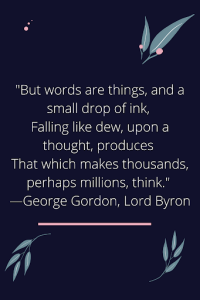Why Use the Term “Professional Development” and not “Training”?
Greetings readers! I am truly honored and excited about serving our global TESOL community as the new blogger on topics related to professional development! (Click here if you’d like to listen to this as a podcast!)
Since this is my first blog post for this interest area, I thought it was a great opportunity to define why we (I!) specifically use the term “professional development” rather than “training” for this blog. It may just seem like a simple word choice, but as you know, words matter!
For instance, many perceive the idea of training as repetitive practice leading to compliance and obedience (e.g., dog training). This may feel a bit extreme, and not helpful, as there are many instances in which training is needed and appropriate for educators.
The Utility of Training
Guzdial (2010) writes that training is a necessary activity, which he likens to the type of precise, guided practice nurses or computer technicians receive. He reminds us that this type of skill-based training is essential in order for professionals to feel confident in implementing new approaches and to execute their tasks with automaticity. Indeed, it is hard to imagine beginning to use, for instance, a new web conferencing platform (Zoom, anyone?) without some type of training, or to implement a testing protocol in a school without full staff training.
A potential risk with training is that educators can become outdated if they do not have a personal professional development destination. Gaining one’s training solely from what the workplace provides or requires can lead to “dinosaur” syndrome: educators whose skills have not evolved with the times or who may not be learning “how to be better problem solvers, critical thinkers, and innovators” (Raisonliving.com, n.d.).
The Importance of Professional Development
Professional development, or professional learning as it is perhaps even better named, is not done “to” educators, but rather, accomplished “by” them. In contrast to training, which is considered to be focused, formal, and linear, professional development may be less formal and have several possible outcomes, formats, and foci (Herbert-Smith, 2019). The educator makes choices about their interests and needs, and thus is empowered in the process of learning (Calvert, 2016). The educator who pursues professional development will be continuously evolving, surveying the land, and making choices about which direction to head toward. The bird-in-flight is a great mental image for this dynamic process.
These distinctions are further identified in the following table. As you review these, what do you see as the “hidden curriculum” of a training versus professional development stance?
| Training | Professional Development |
| The organization invests in the program or application. | The organization invests in the individuals. |
| Fills a temporary gap or bridges a particular issue. | Works toward long-term adaptability and growth. |
| One-directional, from trainer to trainee | Multidirectional, often in collaboration with a facilitator |
| Time-bound learning at the behest of the organization | Continuous learning for its own sake |
| May be best suited for novices to the field or to an activity | May be best suited for the more experienced |
| Separate from the context of implementation | Must be implemented in context |
| Concerned with the present | Concerned with the future |
| Focused on the job | Focused on the career |
| Focused on the “how” | Focused on the “why” |
Looking at Training and Professional Development in Action
Let’s imagine a training day and a professional development session in a school. The goal is for teachers to use more active learning strategies with their young learners. Where do you see opportunities for teacher learning? Where do you see limitations or challenges?
Scenario 1
A group of teachers who all provide ESL/EFL classes to young learners (ages 4–7) are given a day off from teaching to attend a training or “inset” day. They have no idea what the topic will be and show up to the classroom unsure of what they will be learning. Their school leaders let them know that an outside consultant has come to give them training on how to use more active learning techniques in their classroom. There is some modeling of the approaches during the training, which is enjoyable for the teachers, who rarely have time to interact with one another. During the lunch break, they begin discussing some common challenges but quickly have to return to the session.
Scenario 2
A group of teachers who all provide ESL/EFL classes to young learners (ages 4–7) are given a day off from teaching to attend a professional development day. Prior to this day, they were given three choices of focus related to active learning techniques, and when they come to the session they quickly join their chosen group. The teachers have each researched and brought in one active learning technique they have used or want to use, and model it in their small groups. Eagerly, the teachers discuss how the techniques have worked or could work in their context. At the close of the session, each teacher commits to exploring one to two of these active learning approaches. They know the group will be meeting again in 2 weeks to assess their experiences, and that their supervisor will be their audience to hear how the implementation is progressing.
I look forward to engaging with you on a monthly basis on all topics related to professional development/learning! Let’s make this a space to reflect and grow together!
In the comments, please join in the conversation about “training” and “professional development”! I promise to reply!
References
Calvert, L. (2016). Moving from compliance to agency: What teachers need to make professional learning work. Learning Forward and NCTAF. https://nctaf.org/wp-content/uploads/2016/03/NCTAF-Learning-Forward_Moving-from-Compliance-to-Agency_What-Teachers-Need-to-Make-Professional-Learning-Work.pdf
Guzdial, M. (2010). Teacher training v. teacher professional development. Computing Education Research Blog. https://computinged.wordpress.com/2010/04/03/teacher-training-vs-teacher-professional-development/
Herbert-Smith, K. (2020). Training vs. professional development—What’s the difference and does it matter? IRIS Connect Professional Development Blog. https://blog.irisconnect.com/us/training-vs-professional-development-whats-the-difference-and-does-it-matter#:~:text=It’s%20about%20learning%20how%20to,evolve%20your%20capability%20and%20competency
Lord Byron Quotes. (n.d.). Quotes.net. https://www.quotes.net/quote/38715
Patnoudes, E. (2015). What should come first, training or professional development? EdTech Magazine. https://edtechmagazine.com/k12/article/2015/03/what-should-come-first-training-or-professional-development
Raisonliving.com. (n.d.) Is there a difference between training and professional development? https://raisonliving.com/2018/10/20/training-versus-professional-development/




About the author
Laura Baecher
Dr. Laura Baecher is professor of TESOL at Hunter College, City University of New York. Her research interests and publications relate to teacher education, including educational technology in teacher learning, observation and coaching for English language teaching, and professional development in TESOL. Her recent books are Using Video to Support Teacher Reflection and Development in ELT and Reflecting on Problems of Practice in TESOL. She has served as chair of TESOL International Association’s Teacher Education Interest Section, an English language specialist for the U.S. Department of State, and president of the New York State TESOL affiliate.